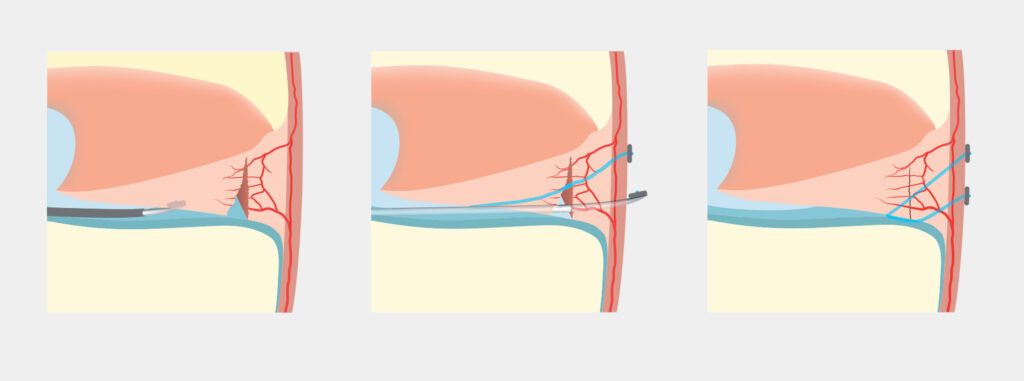Welcome - Knee orthopedist in Lausanne – Pathology: Meniscus injuries
Meniscus injuries
The knee is one of the most stressed joints in the human body. This complex structure accompanies us with every step, every bending movement, and every propulsion effort. When specific pain occurs in the joint space or a blockage occurs, it is often a sign that a meniscal injury has developed. This pathology can appear suddenly during a sports injury or develop gradually with the repetitive stresses of everyday life.

Causes
Meniscal injuries occur through different mechanisms that reflect the variety of stresses experienced by these structures. Sports injuries are a major cause, particularly during rotational movements of the knee under load, sudden changes of direction, or unbalanced jump landings. Degenerative wear is another common cause, linked to the natural aging of tissues and the repetitive stresses of daily life. Finally, some injuries occur during simple movements such as getting up from a squat, often revealing pre-existing fragility of the meniscal tissue.
Symptoms
A meniscal injury presents with characteristic signs that guide the diagnosis. The pain is located precisely on the joint space between the femur and the tibia, on the internal or external side depending on the affected meniscus. This pain is accentuated during pivot movements or in extreme knee flexion or extension positions. Patients frequently describe an inability to squat completely and phenomena of locking or pseudo-locking. Unlike ligament injuries, swelling is not always present, which can delay awareness of the severity of the injury.
Treatments
The management of meniscal injuries initially favors a conservative approach, which is particularly effective in the early stages. This strategy includes temporary rest, cold therapy, anti-inflammatory measures, and specialized physiotherapy. The goal is to reduce inflammation and gradually restore joint function. However, in cases of mechanical blockage, extensive injury, or failure of conservative treatment, surgery may be necessary to preserve long-term knee function.

Surgery
Surgical intervention for meniscal lesions is performed by arthroscopy, a minimally invasive technique that allows for a precise and respectful approach to the structures. Current philosophy favors maximum preservation of meniscal tissue, as it is now known that total meniscectomies inevitably cause long-term osteoarthritis. Therefore, whenever possible, suture repair is preferred, using modern absorbable anchoring techniques. In the case of an irreparable lesion, only the damaged part is removed, preserving as much healthy tissue as possible to maintain the biomechanical function of the joint.
Want to learn more about the meniscus?
On our Medicol website you will find additional detailed information.
This article is original and was created entirely by our team of referring physicians. Last updated September 17, 2025.
Our knee specialist
Dr Jacques Vallotton
- Referring Physician
- Specialist in orthopedic surgery and traumatology. SEMS sports physician
Would you like a consultation with one of our doctors?
Do not hesitate to contact us, we will be happy to help you.





